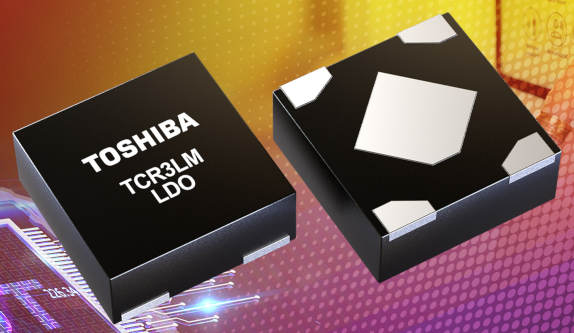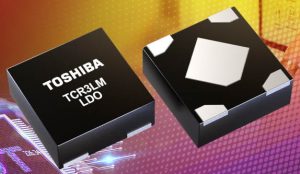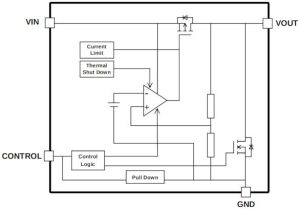
Quiescent current is typically 1.2μA with no load.
They are “specifically aimed at applications powered by small-scale batteries [including] IoT modules, communications modules, wearable devices and other miniature equipment”, according to the company.
There are over 30 devices spanning outputs of 0.8 to 5.0V, with an input voltage of 1.4 to 5.5V.

Thermal output limiting is includes, so maximum output current will depend on input-output voltage differential and the outward heat path. Derating starts at 25°C in the data sheet when mounted on 40 x 40mm of FR4 with 50% double-sided metal coverage.
Load transient response for the 2.8V version with a 1mA to 100mA step is typically -70mV or +35mV depending on the step direction. This is with Cin = Cout = 0.47μF.
Regarding circuit size, Toshiba said: “small ceramic capacitors can be used on the input and output”, however, regarding the output capacitor, it added: “Because of the type of the capacitors, there might be unexpected thermal features. Please consider application condition for selecting capacitors.”
The fourth pin for shut-down to 200nA max over temperature (low or open-circuit = off). When commanded off, an internal mosfet shorts the output to discharge the supplied circuit.
Find the TCR3LM family data sheet here







